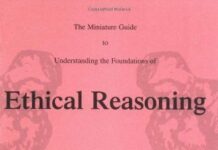
Ebook Info
- Published: 1994
- Number of pages:
- Format: PDF
- File Size: 3.08 MB
- Authors: aa
Description
User’s Reviews
Reviews from Amazon users which were colected at the time this book was published on the website:
⭐Never before have I began reading a book more predisposed to hate it. Generally, I like to read math books that are slim because I feel that it forces the author to get right to the heart of the material as quickly as possible. I also like my math books to have a rigid structure of formal proofs surrounded by expositional paragraphs. This book, on the other hand, sits at an intimidating 478 pages and has no proofs that are set aside in the proof environment in LaTeX. The proofs are blended together with the general commentary paragraphs in the flow of this book’s exposition. So it was a huge surprise for me when I actually found that I enjoyed reading this book.The first thing that I think should be noted is that this book is written in an informal language. I know many reviewers have stated that this bothers them and have hinted at the fact that they think some of the proofs here are less-than-rigorous (perhaps implying wrong). I don’t think this is the case at all and there’s a good reason for this. This book is about conveying the essence of a proof to the reader much more than the gritty technical details (which there is little of in basic complex analysis in the first place). This is a good thing. Whatever can be said about the books by Rudin or some others, you cannot possibly say that a newcomer to the subject would walk away with a good intuition for the subject on a first go. Here is a book entirely devoted to teaching the reader how to think about the material so that they will see the results as being natural, and the book does a marvelous job at it. Now, with this in mind, I thought that all of the proofs were very rigorously stated, and the fact that he used English instead of mathematical symbols for everything greatly enhanced the readability of the proofs. The only proof that was less-than-rigorous in my eyes was the proof of Green’s Theorem, but Gamelin comes right out and states that it won’t be rigorous, and I don’t think you can bash a complex analysis book for not proving a multivariable result. Another thing worth noting is that this book takes a more geometric approach to the material in that it focuses on how FLTs behave and how regions are deformed/not deformed by certain types of mappings. This is the style that seems most popular for introductory texts and was seemingly popularized by Ahlfors’s text.Another thing that I think should be mentioned is that by the time a student can reasonably begin looking for books on complex analysis, they should have the ability and mathematical maturity to take a description or an explanation and digest it and turn it into formal mathematics need be. When you converse with your friends or colleagues about math, you don’t speak in epsilons and deltas, but rather in general terms which cut to the heart of the argument. Gamelin is doing this, but in a much more structured format than what you would expect, and so I think this style is beneficial. For example, when I came to the proof of the Reside Theorem, I instantly knew what he was going to do for the proof before I read it. I had an intuition for the material that made the results appear natural, and for a first book to do this is quite impressive.So what about the problems. As staying in the first book on the subject category, this is a book which has a wide variety of problems and difficulty levels. If you attempt most of them (which you should with this book) then I think you would walk away with a very good understanding of how to use the results in both simple and complicated scenarios. However, you must do most of the harder problems. It would be very easy to simply do the easy problems and then be lured into a false sense of security about your depth of understanding.Another thing that needs to be mentioned is that a first book in complex analysis should teach computational techniques as well as theoretical ones. Complex analysis was made, in part, to compute definite and indefinite integrals. So having a book that does not teach you how to use the residue theorem to compute an integral is doing you a disservice. This is another reason why books like Rudin’s Real and Complex Analysis are not good first choices for textbooks. Here is a book that teaches the student how to do computations when they are needed, and gives plenty of clear examples and practice problems so that the student can become proficient.The breadth of information that this book covers is also impressive. This book covers all of the standard material (with a pinch of not-so-standard material) in the first eleven chapters (out of sixteen). I took a graduate course at UMich which covered this material exactly and it was a very solid course. After this material, any student could go on to further topics in other books and would be completely comfortable recognizing and implementing complex analytic techniques in more advanced analysis books. I have not read the last five chapters (which cover special functions, approximation theorems, Riemann surfaces, and solutions to the Dirichlet problem), but they appear to carry the same style as the rest of the book, which in my mind means they should be good as well.All in all, I think this book is as good of a book as any other for a first exposure to the material. Obviously more advanced books will be needed by graduate students later in their studies, but I would not look past this book as a first course (especially when Ahlfors is almost two-hundred dollars now).
⭐It is a very comprehensive and well written book.
⭐I liked this book because I believe computation is critical to a deep understanding of a mathematical subject. Here we have examples and problems ( with solutions ) that will test your ability to use the theory. I agree with others that there is some hand waving when it comes to rigor. If you have no experience with the subject you might like the “popular math” book An Imaginary Tale by Paul Nahin to get your feet wet. I wouldn’t start with Ahlfors. Another book that is loved by many but panned for lack of rigor by some is Visual Complex Analysis by Needham. I also like some of the older books like Watson’s A Course in Modern Analysis and some of the inexpensive books published by Dover. There’s a lot to choose from but this one is among the best for people who like practical math.
⭐Few things I disliked: Examples are not worked out. Some explanation though, but not worked out in detail. Definitions are just thrown in there. I like other books that start with: DEF := xyz.Overall the book is fine. Just wished the author wasn’t lazy and actually showed steps and work. If you’re reading this book, then clearly you’re not Terrence Tao, and therefore worked out examples would be helpful.
⭐I paid $75 and got a $25 binding :0 the binding was a flat-glue type, not one of the good stitched ones…
⭐We are using this book for my graduate complex analysis course. The book is easy to understand, assumes little background apart from knowledge of calculus, basic sequences and series, and basic real analysis. Sometimes the author doesn’t go into a lot of detail into the materials presented in the text before jumping into exercises. So, i felt unprepared at times to tackle those problems even after reading the material preceding the exercises. Would have been helpful if we had a review chapter at the beginning of the book refeshing some of the real analysis techniques we would need to know to fully understand the book.But, overall a good book.
⭐I posted the following review with the Bak/Newman book, but I thought reproducing it here as well may be useful:I have invested a lot of effort searching for the “ideal” textbook on complex variables. I found Bak/Newman to be extremely terse, with minimal detail, inadequate explanations, and unenlightening examples. The book by Brown/Churchill is a very accessible introduction, although I was surprised by the number of typos, and the use of “multivalued functions” may cause confusion. I came to the conclusion that the book by Gamelin may be the best overall in terms of clarity of explanation, rigor, and useful detail.
⭐I wish the fundamental theorem of algebra would have been proved. But the book says it will be shown in later sections. The homework of the section is working into the proof. I found the problem in the second section, about geometric series, interesting.All in all the first three sections were well presented and the homework problems enlightening.
⭐The text “Complex analysis” by Theodore Gamelin is one of many which have proliferated over the decades since I used Lars Ahlfors’ seminal text “Complex analysis” as an undergraduate. Ahlfors was a joy to use and spoiled me somewhat. I bought Gamelin to add to my library which includes Ahlfors and other earlier works such as Knopp’s five-volume “Theory of functions”, Einar Hille’s two-volume “Analytic function theory”, Nevanlinna and Paatero’s “Einführung in die Funktionentheorie’ and more recent texts such as Sarason and Saff & Snider. Gamelin covers the ground well for a current complex analysis course, it has informative historical notes, many figures to aid intuition, and is fun to work with.
⭐The book came in good condition. Paper quality is also good. Kudos the publisher and seller.
⭐One of the best books on complex analysis
⭐the book is so great and hard to find a book like this, but the printing quality IMPRESSED me. It’s like a photocopier copy
⭐must read book
Keywords
Free Download By Theodore W. Gamelin – Complex Analysis: 1st (first) Edition in PDF format
By Theodore W. Gamelin – Complex Analysis: 1st (first) Edition PDF Free Download
Download By Theodore W. Gamelin – Complex Analysis: 1st (first) Edition 1994 PDF Free
By Theodore W. Gamelin – Complex Analysis: 1st (first) Edition 1994 PDF Free Download
Download By Theodore W. Gamelin – Complex Analysis: 1st (first) Edition PDF
Free Download Ebook By Theodore W. Gamelin – Complex Analysis: 1st (first) Edition


![By Ahmed A. Shabana:Computational Dynamics, 3rd Edition Third (3rd) Edition (3/E) TEXTBOOK (non Kindle) [HARDCOVER] by aa (PDF)](https://sci-books.com/wp-content/uploads/2022/10/B00AOTPLAG-218x150.jpg)